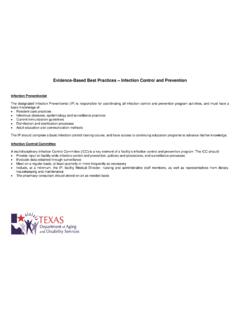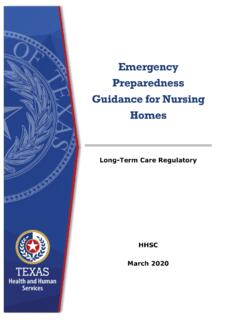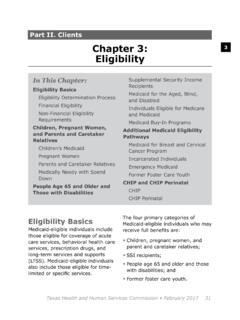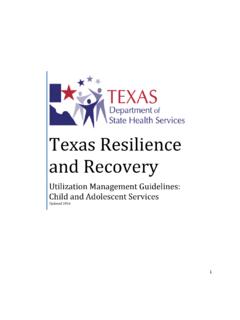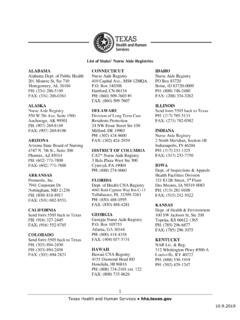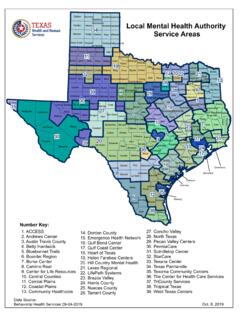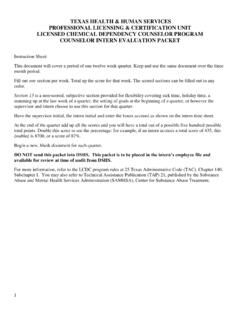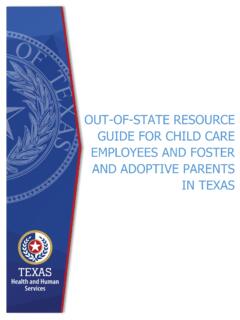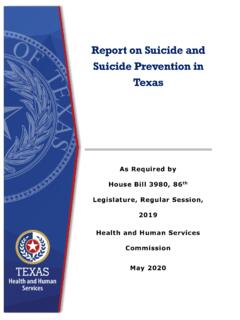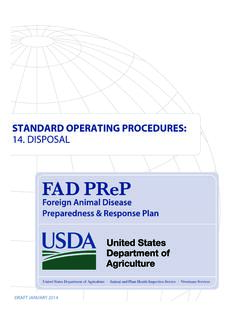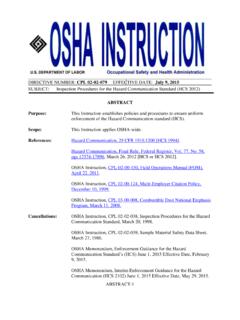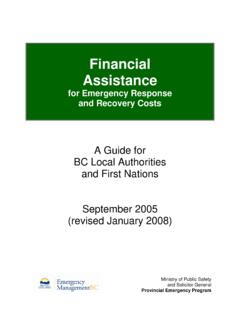Transcription of Nursing Facility COVID-19 Response Emergency Rule
1 Effective 11/28/2021. TITLE 26 HEALTH AND HUMAN SERVICES. PART 1 HEALTH AND HUMAN SERVICES COMMISSION. CHAPTER 554 Nursing Facility REQUIREMENTS FOR LICENSURE AND. MEDICAID CERTIFICATION. SUBCHAPTER CC COVID-19 Emergency RULE. ADOPTION PREAMBLE. The Executive Commissioner of the Texas Health and Human Services Commission (HHSC) adopts on an Emergency basis in Title 26, Texas Administrative Code, Chapter 554, Nursing Facility Requirements for Licensure and Medicaid Certification, new This Emergency rule is adopted in Response to COVID-19 and requires Nursing facilities to take certain actions to reduce the risk of spreading COVID-19 .
2 The Emergency rule also permits Nursing facilities to request temporary increases in capacity and Medicaid bed allocations to aid in preventing the transmission of COVID-19 or caring for residents with COVID-19 . As authorized by Texas Government Code , HHSC may adopt an Emergency rule without prior notice or hearing if it finds that an imminent peril to the public health, safety, or welfare requires adoption on fewer than 30 days' notice. Emergency rules adopted under Texas Government Code may be effective for not longer than 120 days and may be renewed for not longer than 60 days. BACKGROUND AND PURPOSE.
3 The purpose of the Emergency rulemaking is to support the Governor's March 13, 2020, proclamation certifying that the COVID-19 virus poses an imminent threat of disaster in the state and declaring a state of disaster for all counties in Texas. In this proclamation, the Governor authorized the use of all available resources of state government and of political subdivisions that are reasonably necessary to cope with this disaster. HHSC accordingly finds that an imminent peril to the public health, safety, and welfare of the state requires immediate adoption of this Emergency Rule for Nursing Facility Response to COVID-19 .
4 To protect Nursing Facility residents and the public health, safety, and welfare of the state during the COVID-19 pandemic, HHSC is adopting an Emergency rule to mitigate and contain COVID-19 and to permit a Nursing Facility to request a temporary increase in capacity or Medicaid bed allocation as part of the Facility 's Response to COVID-19 . The purpose of the new rule is to describe the requirements Nursing Facility providers must immediately put into place to mitigate and contain COVID-19 and the procedures and criteria for requesting a temporary capacity increase or a temporary Medicaid bed allocation increase.
5 STATUTORY AUTHORITY. The Emergency rulemaking is adopted under Texas Government Code , , and , Texas Health and Safety Code and , and Texas Human Resources Code and Texas Government Code authorizes the adoption of Emergency rules without prior notice and 1. hearing, if an agency finds that an imminent peril to the public health, safety, or welfare requires adoption of a rule on fewer than 30 days' notice. Texas Government Code authorizes the Executive Commissioner of HHSC to adopt rules and policies necessary for the operation and provision of health and human services by health and human services system.
6 Texas Government Code provides HHSC with the authority to administer federal funds and plan and direct the Medicaid program in each agency that operates a portion of the Medicaid program. Texas Health and Safety Code states the goal of Chapter 242 is to ensure that Nursing facilities in Texas deliver the highest possible quality of care and establish the minimum acceptable levels of care for individuals who are living in a Nursing Facility . Texas Health and Safety Code requires the Executive Commissioner of HHSC to make and enforce rules prescribing minimum standards relating to quality of care and quality of life for Nursing Facility residents.
7 Texas Human Resources Code provides that HHSC shall adopt necessary rules for the proper and efficient operation of the Medicaid program. Texas Human Resources Code requires the Executive Commissioner of HHSC to establish procedures for controlling the number of Medicaid beds in Nursing facilities. The new rule implements Texas Government Code and , Texas Health and Safety Code Chapter 242, and Texas Human Resources Code and The agency hereby certifies that the Emergency rulemaking has been reviewed by legal counsel and found to be a valid exercise of the agency's legal authority. ADDITIONAL INFORMATION.
8 For further information, please call: (512) 438-3161. 2. TITLE 26 HEALTH AND HUMAN SERVICES. PART 1 HEALTH AND HUMAN SERVICES COMMISSION. CHAPTER 554 Nursing Facility REQUIREMENTS FOR LICENSURE. AND MEDICAID CERTIFICATION. SUBCHAPTER CC COVID-19 Emergency RULE. Nursing Facility COVID-19 Response . (a) Definitions. The following words and terms, when used in this subchapter, have the following meanings. (1) Cohort--A group of residents placed in rooms, halls, or sections of the Facility with others who have the same COVID-19 status or the act of grouping residents with other residents who have the same COVID-19 status.
9 (2) Cohorting--The act of establishing a cohort. (3) COVID-19 negative--The status of a person who has tested negative for COVID-19 , is not exhibiting symptoms of COVID-19 , and has had no known exposure to the virus since the negative test. (4) COVID-19 positive--The status of a person who has tested positive for COVID-19 and does not yet meet Centers for Disease Control and Prevention (CDC). guidance for the discontinuation of transmission-based precautions. (5) COVID-19 status--The status of a person based on COVID-19 test results, symptoms, or other factors that consider the person's potential for having the virus.
10 (6) Fully-vaccinated--A person who received the second dose in a two-dose COVID-19 vaccination series or received one dose of a single-dose COVID-19 . vaccination and it has been at least 14 days since receiving the vaccination. (7) Isolated--The separation of people who have COVID-19 positive status from those who have COVID-19 negative status and those whose COVID-19 status is unknown. (8) Long-term care (LTC) Providers-- Nursing facilities, assisted living facilities, intermediate care facilities for individuals with intellectual disability or related conditions, day activity and health services facilities, prescribed pediatric extended care centers, home and community support services agencies, state supported living centers, home and community-based services waiver providers, and Texas home living waiver providers.
